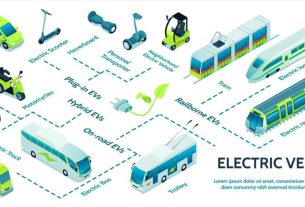Alice Bernard and co-authors describe how they have jointly used local ecological knowledge and camera trap data. With hindsight, they discuss how involving local people in research projects can enhance conservation efforts in the Garden Route Biosphere Reserve (GRBR), South Africa.
The Garden Route National Park (GRNP), in the eponym Biosphere Reserve, is one of the only truly unfenced National Parks in South Africa. The absence of fences allows wildlife to move freely between protected areas and surrounding lands, making collaboration with people essential for effective conservation.
The research project was born out of discussions between researchers from the International Research Laboratory REHABS, Nelson Mandela University, and South African National Parks scientific services. These discussions highlighted the need to combine traditional wildlife monitoring tools, like camera traps, with participatory approaches, such as interviews and surveys, to better understand mammal distribution in anthropogenic landscapes and engage with stakeholders.
The research
We deployed 75 camera traps in and around the GRNP, as a way to monitor wild mammal species and initiate conversations with the various local stakeholders. Thirty-three stakeholders (residents, farmers, foresters) engaged to the project.
We then developed an interview-based approach to gather additional data on mammal occurrences and identify the values and perceptions of local people regarding mammals. COVID-19 pandemic necessitated a shift from face-to-face interviews to an online survey, which was sent via mailing lists, Facebook, and WhatsApp groups. This approach proved effective, yielding 247 responses.
Both the camera traps and local ecological knowledge-based survey were designed using the same geographic grid (Bernard, Guerbois, Venter, et al., 2024), allowing for the integration of data from both methods. An integrated occupancy model was used to analyze species occurrence along a gradient of anthropogenic landscape transformation.
Lessons learned
In the GRBR, the protected area plays a crucial role in preserving large‐bodied species and species with a more specialist diet, although a diversity of species was detected across the landscape. Furthermore, natural habitats were highly valuable in preserving mammals with a slow demographic strategy. These findings have direct implications for land-use planning, suggesting that conservation efforts should prioritize the protection of natural habitats to prevent local biodiversity loss.
Moreover, the research demonstrated the feasibility and benefits of combining different monitoring methods. For conservation managers, this approach can enhance the spatial coverage and detection of mammal species. The integration was especially valuable to document the presence of rare and cryptic species such as the common duiker (Sylvicapra grimmia) or the African clawless otter (Aonyx capensis) in the GRBR.
Additionally, the study was valuable for practitioners as it documents people practices and knowledges about wild mammals, which can be valuable for conservation purposes. The uniqueness of the GRNR, with no fences, requires specific management approaches that are often neglected by practitioners from other protected areas who do not consider what happens beyond their own fences. For instance, Lizette Moolman and Melanie de Morney relied on local knowledge to optimize camera trap configurations inside the park (Moolman et al., 2019).
The approach used fostered participation by various stakeholders and allowed us to connect with local people and involve them in conservation research. Building trust with stakeholders is an important step for co-designing wildlife-friendly anthropogenic spaces, that are accepted by residents, and can be resilient. Aligning local ecological knowledge with camera trapping efforts, can have a variety of benefits, not just from an ecological data gathering point of view, but also in fostering long-term co-learning experiences.
The success of this project would not have been possible without the support and participation of local residents and stakeholders of the GRBR, to whom we are thankful.
Read the full article “Combining local ecological knowledge with camera traps to assess the link between African mammal life-history traits and their occurrence in anthropogenic landscapes” in Journal of Applied Ecology.



